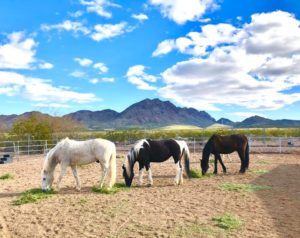Modern Neighbors
As we evolved into modern humans, much of our cultures and traditions still centered around a communal aspect. Most people knew everyone else in their community and were active in its affairs for most of our history.
Slowly over time, however, we separated ourselves from each other and removed ourselves from the community at large, especially in the United States. Instead of congregating in large communal spaces and living and working near those spaces, we moved farther away from each other, physically and mentally speaking. Our commutes are longer to drive to work, run errands, recreate, and socialize.
We separate ourselves from the things in the world we choose to ignore, like people sleeping on the sidewalk or any other moral failing of our society. Instead of being actively involved in what’s happening in our community, many people either lack the means to help and are unable to be involved; or they ignore what’s in front of us and are unwilling to extend concern for others outside their circle. Both represent a failure of a society that lacks empathy.
As technology advanced, we became connected globally. We increased our online social interactions and decreased our interactions in the real world. Now it seems we minimize the number of interactions we have with other people as much as possible. As a result, we tend to isolate ourselves. Yet, as humans, we still require social interaction. So, we substitute face-to-face interactions with ones online in the form of chat rooms and forums, comments and likes, and so on. It doesn’t always fill the void, though. And over the last year, with the pandemic happening, the need for human contact and connection posed new challenges to people.
You’d think it’d be easy for people to be neighborly, but our individualistic culture has impacted that.
Cultural Conditioning
As part of our individualistic upbringing here in the U.S. and the high priority we set on the idea of privacy and self-accomplishment, many people find it difficult to involve themselves in things outside their control, their house, their circle, their community, or their worldview. Much of this stems from the inability to balance supporting others while maintaining independence—basically, collectivism versus individualism.
We’re raised on the notion of “us versus them,” whoever “they” includes. Whether it’s the media, the government, our culture, our family, or our peers telling us, this sentiment is drilled into each generation to grow division among different groups of people. This division is so pervasive, and it separates us on many levels.
Physically speaking, we spread out, put up walls, turn away “outsiders,” and push this notion of “other.” Mentally, we place people into groups and criteria for the way they dress or act, their culture and customs, what they believe in or didn’t believe in, the kind of work or activities they take part in, and so on. Some people developed intolerances to characteristics like race, ethnicity, religion, sex, gender, culture, etc.
Today, we separate ourselves in an infinite number of ways, divisions both new and old. A lot of the same sentiments remain throughout. We’re still divided over things like religion, race, and gender, but now preferences related to politics, pop culture, and media divide people heavily. It’s only become more divisive over time.
Perhaps worse, we’re divided on the very issue of change itself. Unfortunately for the older generations, change happened at a slower pace for them. Now things move too quickly and change constantly; it’s hard to keep up. Change is scary, but we can either flow with the river or fight against it.
Progression of Neighborliness
Over time, neighborliness varied across cultures, countries, societies, and individuals. Violence has always existed, yet I’d argued that as time went on, society as a whole slowly progressed. I feel we’ve been steadily moving closer to the idea that violence shouldn’t be acceptable in a progressing society. People are becoming more aware and intolerant of the different types of violence we see in our society, not just the obvious types.
We now appear to have two main large camps of people. Those who accept diversity and embrace others’ differences are willing to learn about changing world concepts and want to make the world a better place. And those who resist change by any means necessary fear things that they don’t understand and are unwilling to be tolerant of others that fall into categories they don’t like or agree with. There are people trying to move forward and people holding them back.
After last year, it’s hard to gauge the level of our society’s neighborliness. We’ve seen examples of neighborliness, or lack thereof, in both extremes; people protesting, volunteering, and providing mutual aid resources to their neighbors and communities; and people who outright refused to protect their neighbors and chose not to wear a mask during a pandemic.
The Impact of Neighborliness on Progress Itself
Mindfulness about neighborliness, whether acknowledged specifically or peripherally, relates directly to our society’s progression. When we show up for one another, that’s neighborliness. When we protest police brutality, racism, sexism, or anything else that harms other people, we stand with our neighbors.
Even our representatives in government impact neighborliness. When politicians work for their constituents, not just their supporters, they’re acting neighborly. But, when they push legislation that harms people, they ultimately act against their neighbors. This ranges from a local to a national to a global level.
While I find it hard to objectively gauge people’s neighborliness over the last year, I personally and optimistically believe we’re more neighborly than ever before. It seems that for all the unneighborliness, it inspires even more neighborliness from those sick of lack of regard for human decency and respect for others.
Naturally, people want to help others. So when we see people suffering, we desire to help somehow, whether it’s a small gesture or something bigger. This works its way up to a societal level when we start enacting policies that support neighborliness and treat people with dignity and respect. If we let these ideals guide us, our society becomes more neighborly overall.
We’ve come a long way, but we have a long way to go down the road of progress. People, especially older generations, are exhausted by change and just want things to stay the way they are. But that’s not how life nor the world works. One thing is for certain – change is inevitable. Those who fight change often blame others for change instead of understanding that as a society, we’re constantly growing and learning. When people are open to new ideas and ways of thinking and doing, change happens fast.
Like a Good Neighbor, Be There for Others
All in all, our level of neighborliness reflects the values of our society. It determines the extent to which we take care of our most vulnerable people. And ultimately, it relates to how progressed we truly are.
Neighborliness is about solidarity and spreading love to those around you. It starts with each of us; as individuals. It applies to whoever you’re willing to include in your “neighborhood” as you grow your idea of community. Like Mr. Rogers, our neighborhood can be anywhere and include anyone. And it’s always “a beautiful day for a neighbor.”
Today, for #WontYouBeMyNeighborDay, step outside your front door and find something neighborly to do.
Help out an actual neighbor or introduce yourself to someone in your neighborhood; maybe form a friendship with them. While you’re out running errands or at work, look for opportunities to be kind and neighborly. Random acts of kindness promote neighborliness, no matter what someone’s proximity to you.
From there, find ways to expand your neighborhood and find issues that your neighbors are experiencing so you can help fight for them, even if you don’t know them or aren’t personally impacted by those issues. Neighborliness comes from within, so #GetinMotion by sharing it with the world!
‘It’s a Beautiful Day in the Neighborhood’ – Mr. Rogers
It's a beautiful day in this neighborhood, A beautiful day for a neighbor, Would you be mine? Could you be mine? It's a neighborly day in this beautywood, A neighborly day for a beauty, Would you be mine? Could you be mine? I have always wanted to have a neighbor just like you, I've always wanted to live in a neighborhood with you. So let's make the most of this beautiful day, Since we're together, we might as well say, Would you be mine? Could you be mine? Won't you be my neighbor? Won't you please, Won't you please, Please won't you be my neighbor?



